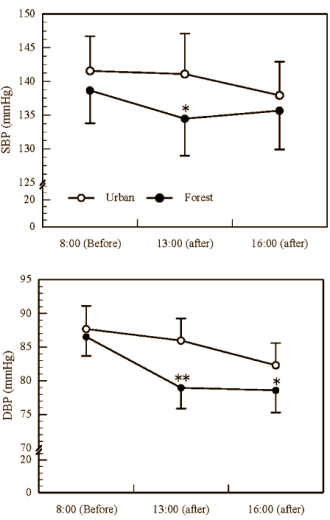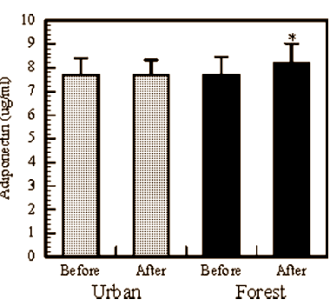We previously found that forest environments reduced stress hormones such as adrenaline and noradrenaline and showed the relaxing effect both in male and female subjects. In the present study, we investigated the effects of walking under forest environments on cardiovascular and metabolic parameters. Sixteen healthy male subjects (mean age 57.4 ± 11.6 years) were selected after obtaining informed consent. The subjects took day trips to a forest park in the suburbs of Tokyo and to an urban area of Tokyo as a control in September 2010. On both trips, they walked for 2 h in the morning and afternoon on a Sunday. Blood and urine were sampled on the morning before each trip and after each trip. Blood pressure was measured on the morning (0800) before each trip, at noon (1300), in the afternoon (1600) during each trip, and on the morning (0800) after each trip. The day trip to the forest park significantly reduced blood pressure and urinary noradrenaline and dopamine levels and significantly increased serum adiponectin and dehydroepiandrosterone sulfate (DHEA-S) levels. Walking exercise also reduced the levels of serum N-terminal pro-B-type natriuretic peptide (NT-proBNP) and urinary dopamine. Taken together, habitual walking in forest environments may lower blood pressure by reducing sympathetic nerve activity and have beneficial effects on blood adiponectin and DHEA-S levels, and habitual walking exercise may have beneficial effects on blood NT-proBNP levels.

